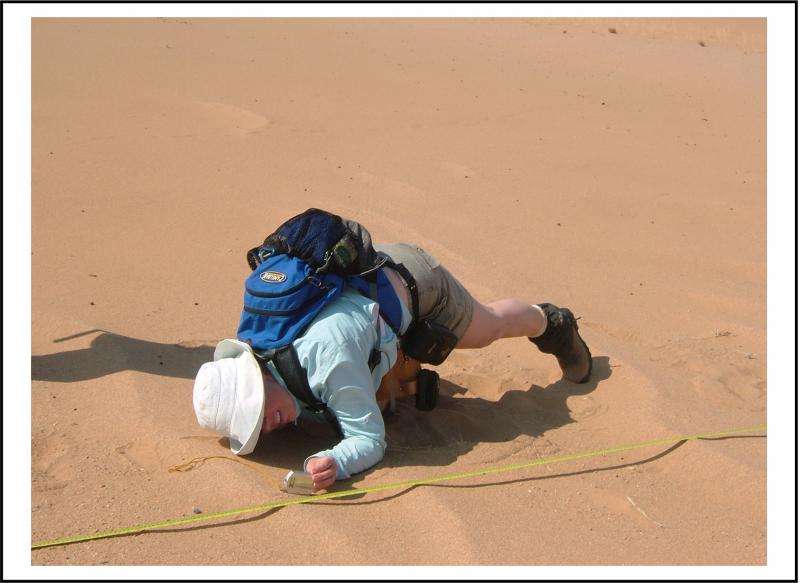Mapping winds and dune evolution on the Red Planet

Three Irish scientists have discovered how winds shape sand dunes on Mars by using image data from the HiRISE camera on the Mars Reconnaissance Orbiter and then comparing patterns with wind models that were tested on dunes seen on Northern Ireland's peninsula of Magilligan.
The resolution of the HiRISE data is so fine that the team was able to view individual ripples in the sand on Mars 225 million kilometres away from Earth.
Modelling the wind flow in 3D enabled the scientists, for the first time, to see how large dunes on Mars modify localised wind flow.
The results are important, not only for understanding the evolution of sand dunes on Mars, but also for learning how the wind may blow when we try to land new spacecraft on the Red Planet, or when high winds kick up around our current geologists on Mars – the two Rovers: Curiosity and Opportunity.
Assistant Professor of Geography in the School of Natural Sciences in Trinity College Dublin, Dr Mary Bourke, collaborated with Professor Derek Jackson at the University of Ulster and Dr Thomas Smyth at Flinders University to make the discoveries. The team's findings have just been published in leading journal Nature Communications.
Dr Bourke said: "I have always wondered which way the winds blow on Mars. Of course we don't have long-term meteorological stations up there to help me answer that question, so we have previously had to use the shape of sand dunes or the elongation direction of sand streaks to map wind flow, but we miss much of the finer detail there."
Dr Bourke added: "We worked with data from the Proctor Crater region on the southern highlands of Mars, and found that ripples on the dunes moved around 1.5 metres per year. This is a much more accurate insight than the one we had before – we now have a better platform from which to consider how Martian landforms have evolved, and how they will evolve when structures such as spacecraft disturb them in the future."

The scientists' results showed that established thinking using large-scale global air circulation models is too crude for understanding how winds move sand on the more complex surfaces of Mars (e.g. over sand dunes).
At their study site, they were able to identify the direction of the winds that are likely responsible for transporting sand across the dune surfaces.
More information: Derek W. T. Jackson et al. The dune effect on sand-transporting winds on Mars, Nature Communications (2015). DOI: 10.1038/ncomms9796
Journal information: Nature Communications
Provided by Trinity College Dublin



















